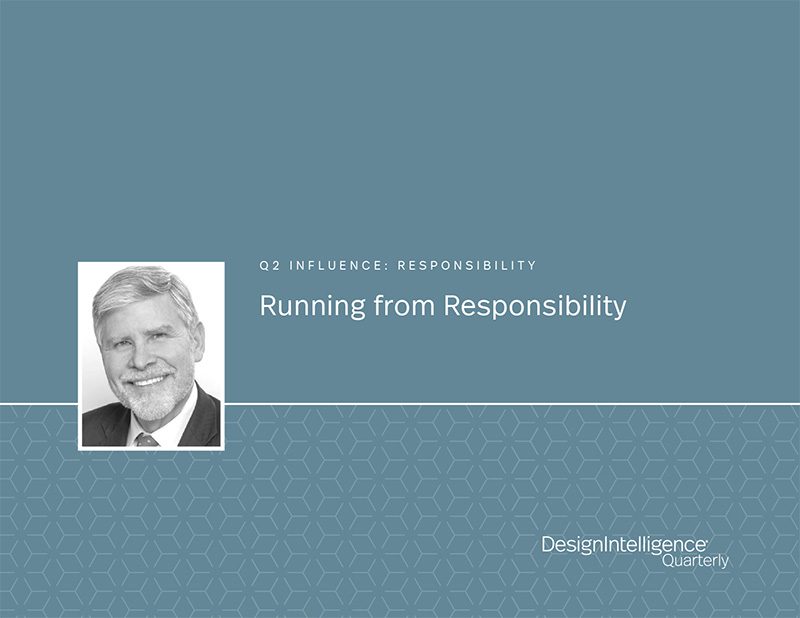Running from Responsibility
by Scott Simpson
Senior Fellow, Design Futures Council
April 27, 2022
Scott Simpson challenges leaders to embrace risk
Architects are a curious breed. They crave the indulgence of their clients but often accuse them of being ignorant about what constitutes quality design. They complain about low fees and lack of profits but choose to remain blissfully unaware about basic business practices. Professional licensure is predicated on the notion that architects are the primary guardians of the health, safety, and welfare of the public in the built environment, but standard AIA contracts specifically prohibit them from playing an active role in ensuring safety on construction sites or dealing with hazardous materials. Architects are also fond of saying that “God is in the details” but their contracts stipulate that they will review submittals and shop drawings only for “general conformance with design intent”, not for specifics. Yet to sign and seal a set of construction documents, architects must profess to be “in responsible control”. What gives?
The design and construction process is rife with both risk and responsibility. For any given project, there are thousands of variables to be considered, multiple possible solutions to be evaluated, tricky team dynamics to be negotiated, and real-world constraints that must be respected. To make sense of all this, someone has to be in charge. During the design phase, it’s (presumably) the architect who organizes and choreographs the dance, providing the “responsible control” without which nothing could get done.

If architects want to lead the parade, then they must also embrace the dual burden of responsibility and accountability that goes with leadership. This means recognizing, accepting, and managing risk, making decisions as needed, and dealing with the inevitable problems that will arise. Unfortunately, a risk-averse attitude has been baked into professional culture through standard AIA contract documents, which contain far more verbiage about how to avoid risk than how to create value through design. However, it’s not possible to exercise control without also accepting the consequences.
Responsibility is not a topic openly addressed in most design schools, but it should be. It’s one thing to propose a creative solution, but it’s quite another to take on the task of following through and making sure it’s implemented as intended. This is not to suggest architects must do everything themselves; design requires the active participation and commitment of many diverse team members. Delegation is important and necessary. Still, somebody has to lead the parade. To get the respect architects crave, they must embrace the responsibility upon which respect is based. Someone who says, “I’ll take care of it” and then does so will be trusted, and trust is the secret sauce of leadership.
Design thinking has real power to improve the human condition. To unleash that power, architects need to apply their leverage through leadership. Rather than running from responsibility, design professionals should embrace it. It comes down to this: design leadership requires leadership by design.
Scott Simpson is a senior fellow in the Design Futures Council and a regular contributor to DesignIntelligence.


